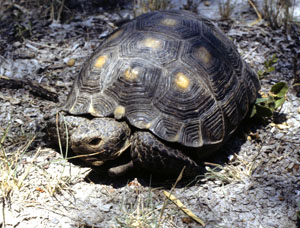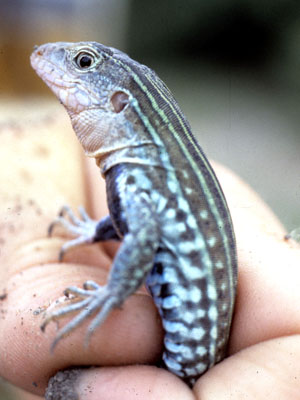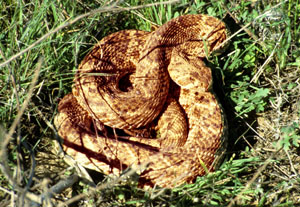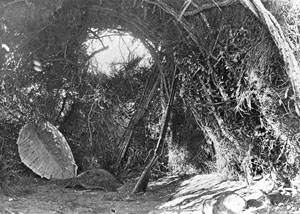Reptiles
South Texas native peoples dined on a variety of reptiles including snakes, lizards, frogs, turtles, and tortoise. The creatures abound in many different habitats and can be caught with minimal effort by netting, gigging, pounding them with a stick, or simply picking them up with bare hands. At least eight genera of lizards, snakes, and turtles were found at one site in Live Oak County (41LK201) in what is now the Choke Canyon Reservoir. Turtle remains were particularly common, which may indicate that the meat was eaten or the shell was used for a container (or both). Remains of spiny softshell turtle (Trionyx spiniferus), also found at the site, undoubtedly represents a food resource, as its shell is too flat and easily broken for much utilitarian use.
At the Late Prehistoric Hinojosa site in Jim Wells County, western box turtle (Terrapene ornata), Texas tortoise (Gopherus berlandieri), and sliders were found, as well as a variety of rat snakes, water snakes, racers, and rattlesnakes. Remains of red-eared turtles, salamanders, frogs or toads, and western diamondback rattlesnake were among the reptiles identified at the Berger Bluff site in Goliad County. Many reptiles are even easier to capture than rodents, being cold-blooded and characteristically slower. Turtles, for instance, spend many days out of the water sunning themselves on rocks.
Based on evidence from Hinds Cave in the adjacent Lower Pecos region, lizards were sometimes eaten whole: skin, bones, and all. Other small reptiles were probably also eaten with minimal preparation.



